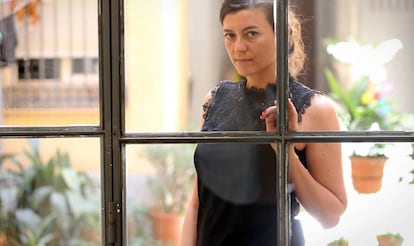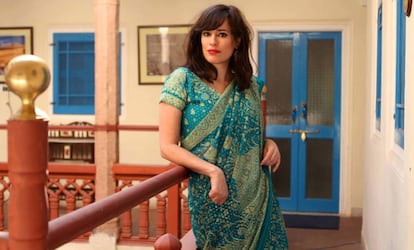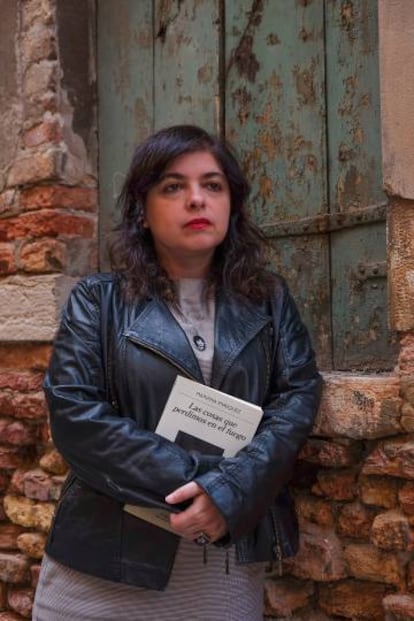Will the next Latin American literature boom be female?
A new generation of writers is being hailed in both the Spanish and English-speaking worlds
Argentinean writer Samanta Schweblin, is having a great year. The Buenos Aires-based 40-year-old’s novel, Fever Dream, was a finalist for the Man Booker International prize, one of the most important English-language literature prizes.

In the end Schweblin did not win, but simply being nominated was a feat for a book originally written in Spanish by a Latin American. Fever Dream’s other accomplishments include a review in The New York Times, an accomplishment shared by fellow female Argentinean writers Mariana Enríquez, 44, and Pola Oloixarac, 40.
The three authors are not alone. In Spain, some of the best literary reviews in recent months have been of books by Latin American women. These include Qué Vergüenza (What a disgrace) by Chilean Paulina Flores, Bolivian Liliana Colanzi’s, Our Dead World, and Mexican Laia Jufresa’s, Umami.

Bogotá 39, an event staged by the Hay Festival, brings together 39 of the best authors in Latin America under the age of 40. A significant number this year were women, including Ecuadorian Mónica Ojeda and Gabriela Jáuregui and Brenda Lozano from Mexico. Men still outnumbered women, 26 to 13, but there still hasn’t been a time like this for female Latin American authors, who are increasingly receiving international acclaim, which has prompted speculation that a new Latin American literary boom could be led by women this time around.
“It’s true that in recent times there’s been a kind of boom, the ‘other boom’ in a way,” says Flores. “I think it has to do with publishers who are giving more space to women. Anyway, I am of the opinion that there will have to come a time when a woman being a writer isn’t a novelty or a surprise. We shouldn’t focus on whether something was written by a man or a woman, but look at the literature itself.”
Women’s work is not published and translated on the scale men’s work is Laia Jufresa, Mexican author
But Claudio López Lamadrid of Penguin Random House believes boom is overstating things. He said his firm has been publishing Latin American women for years but people haven’t been paying attention and that it wasn’t until Schweblin’s Fever Dream that people started to notice.
Laia Jufresa believes “there is less prejudice” among publishers toward female writers, but also shares Lamadrid’s skepticism. “Just because there is a wave, it shouldn’t prevent us from seeing the fact that we still have a long way to go,” she says Jufresa, adding: “Women’s work is not published and translated on the of scale men’s work: this happens all over the world, but with Spanish, which can be read in many countries, it is more noticeable. The books of a Peruvian author, or Mexican, Uruguayan, etc., are usually read in their country and perhaps in Spain, but rarely in other Latin American countries.”
Iolanda Batallé, an editor at Spanish publishers Rata Editorial, insists there is a boom, even if the sales figures don’t match the figures that writers such as Mario Vargas Llosa or Gabriel García Márzquez notched up in the 1960s. She believes it isn’t just female writers from Latin America who are enjoying success and attention. “The reason is as simple as it is powerful: curiosity,” says Batallé. “Readers want to know more about themselves and for this, it is essential to also read female authors.” Batallé believes that the day will come when female authors will be writing the books with the greatest impact. “They have much more to say, for the simple reason that they have not gotten the chance to say it yet,” she argues.

Beyond the obvious similarities among these female writers, there’s another common factor: their work’s themes often touch on the dark side of life. For example, Mariana Enriquez’s Things We Lost in the Fire explores the impoverished neighborhoods “on the dark side of a proud Argentina.” In Our Dead World, Colanzi describes the meat industry. In Umami, Jufresa writes about mourning and absence. Just as Mexican Verónica Gerber writes about the end of an affair in Empty Set. Mónica Ojeda says her book Nefando (Nefarious) is about pedophilia. Argentinean Paula Porroni writes about failure and self-punishment in Buena Alumna (Good schoolgirl).
Their works often explore the dark side of life
Batallé believes that this unique interest is due to the fact that “Latin American women maintain a link with the more savage parts of existence, perhaps because of the societies in which they were born.” “Take a look at geography, the economy, or the history of Latin America” continues Batallé, “and everywhere you will find difficult realities. This pain, coupled with a strong literary tradition (above all masculine), plus the talent of so many writers, ends up creating good literature.”
For Schweblin, these themes are what literature is all about. “It is the most effective way we have to submerge ourselves into darkness, and into our worst fears and desires, in all that is unknown and unnameable. We return to reality with new information and as unscathed as possible,” she says.
English version by Debora Almeida.
Tu suscripción se está usando en otro dispositivo
¿Quieres añadir otro usuario a tu suscripción?
Si continúas leyendo en este dispositivo, no se podrá leer en el otro.
FlechaTu suscripción se está usando en otro dispositivo y solo puedes acceder a EL PAÍS desde un dispositivo a la vez.
Si quieres compartir tu cuenta, cambia tu suscripción a la modalidad Premium, así podrás añadir otro usuario. Cada uno accederá con su propia cuenta de email, lo que os permitirá personalizar vuestra experiencia en EL PAÍS.
¿Tienes una suscripción de empresa? Accede aquí para contratar más cuentas.
En el caso de no saber quién está usando tu cuenta, te recomendamos cambiar tu contraseña aquí.
Si decides continuar compartiendo tu cuenta, este mensaje se mostrará en tu dispositivo y en el de la otra persona que está usando tu cuenta de forma indefinida, afectando a tu experiencia de lectura. Puedes consultar aquí los términos y condiciones de la suscripción digital.










































